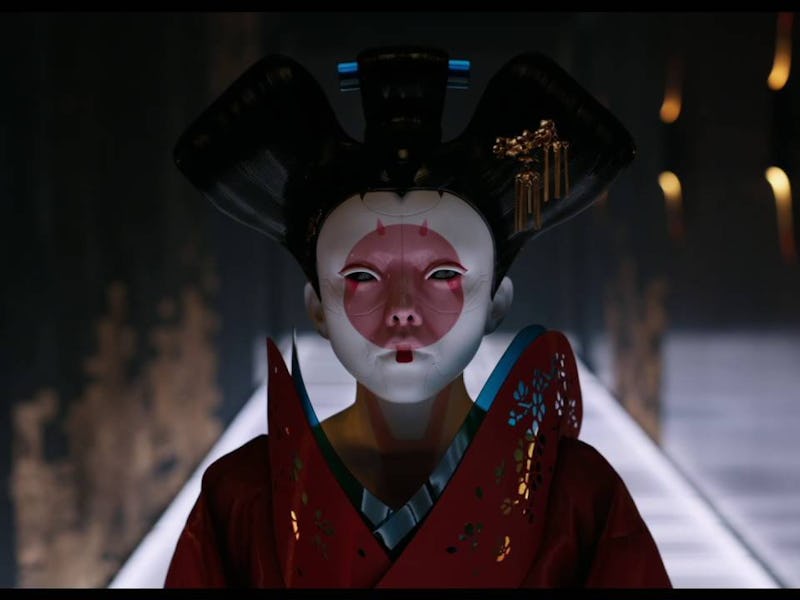All About Robot Geishas and Cyborgs in 'Ghost in the Shell'
They're just the norm in the year 2029.

The upcoming American adaptation of Ghost in the Shell will throw viewers into the year 2029, when and where humanity has grown so accustomed to artificial intelligence and cybernetic enhancements that they’re a part of everyday life. In the original manga of the same name by Masamune Shirow, robots are the norm. In fact, the big plot of the series revolves around cyborgs who work for the government — the Major and her friends at Public Security Section 9 — and everyone’s perfectly okay with that. What’s weird is how those cyborgs come to be in the first place.
This post might contain spoilers for Ghost in the Shell.
Several of Ghost in the Shell’s teasers and trailers have included some sort of creepy-crawly geishas that open their face panels to reveal robotic insides. At one point, a group of them grabs a bunch of businessmen, going full spider-mode on multiple legs to do so. But it’s not the robots themselves that alarm the businessmen as much as the attack itself. In fact, they’re incredibly used to them in a way people in the year 2017 are not. Supposedly, the world is no longer scared of robots or what they might do by 2029, so the government utilizes them to the fullest extent.
In Ghost in the Shell, the Japanese government is taking human bodies, removing their brains, and placing those brains inside cybernetic bodies that become agents for the government. Major is one of them, hence the whole identity crisis plot being hinted at in the upcoming film.
Boo.
The original Ghost in the Shell manga and its various anime adaptations have all honed in on questions about what it means to be human and how far technology can go. There’s even an issue in the manga where a male politician switches brains with a female cyborg so he can experience what it’s like to have a female body. These geishas and cyborgs are not fully human, so why would they be given human rights?
Human parts inside a robot body in the 'Ghost in the Shell' anime.
Not only does the upcoming Ghost in the Shell look to fully embrace this culture created by Shirow’s manga, but it also delves into the important subject of identity and humanity. Johansson’s character, the Major, is told by the government she works for that she was saved by them — but what was she saved from, and what was really taken from her to make her into this new person?
Find out more about the robot and cyborg culture when Ghost in the Shell premieres in theaters March 31.